Windows Active HotSpot
Posted: December 2, 2013
Threat Metric
The following fields listed on the Threat Meter containing a specific value, are explained in detail below:
Threat Level: The threat level scale goes from 1 to 10 where 10 is the highest level of severity and 1 is the lowest level of severity. Each specific level is relative to the threat's consistent assessed behaviors collected from SpyHunter's risk assessment model.
Detection Count: The collective number of confirmed and suspected cases of a particular malware threat. The detection count is calculated from infected PCs retrieved from diagnostic and scan log reports generated by SpyHunter.
Volume Count: Similar to the detection count, the Volume Count is specifically based on the number of confirmed and suspected threats infecting systems on a daily basis. High volume counts usually represent a popular threat but may or may not have infected a large number of systems. High detection count threats could lay dormant and have a low volume count. Criteria for Volume Count is relative to a daily detection count.
Trend Path: The Trend Path, utilizing an up arrow, down arrow or equal symbol, represents the level of recent movement of a particular threat. Up arrows represent an increase, down arrows represent a decline and the equal symbol represent no change to a threat's recent movement.
% Impact (Last 7 Days): This demonstrates a 7-day period change in the frequency of a malware threat infecting PCs. The percentage impact correlates directly to the current Trend Path to determine a rise or decline in the percentage.
| Threat Level: | 10/10 |
|---|---|
| Infected PCs: | 37 |
| First Seen: | December 2, 2013 |
|---|---|
| Last Seen: | January 8, 2020 |
| OS(es) Affected: | Windows |
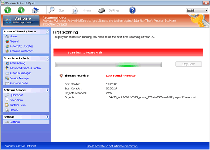 Windows Active HotSpot is one of the newer rogue anti-malware scanners based on templates currently in use by the FakeVimes family. Although its identifying features are considered to be its fake system scans and equally inaccurate pop-up alerts that encourage you to spend money on registration, Windows Active HotSpot's most unreliable functions are related to blocking other applications and downgrading your browser's security settings. Despite its appearance of being a useful security product, malware experts consider Windows Active HotSpot a high-level threat to your computer's safety, and encourage the use of any necessary software or anti-malware strategies for removing Windows Active HotSpot immediately.
Windows Active HotSpot is one of the newer rogue anti-malware scanners based on templates currently in use by the FakeVimes family. Although its identifying features are considered to be its fake system scans and equally inaccurate pop-up alerts that encourage you to spend money on registration, Windows Active HotSpot's most unreliable functions are related to blocking other applications and downgrading your browser's security settings. Despite its appearance of being a useful security product, malware experts consider Windows Active HotSpot a high-level threat to your computer's safety, and encourage the use of any necessary software or anti-malware strategies for removing Windows Active HotSpot immediately.
A Hotspot for Security Attacks Disguised as Security
With a new name for an old PC security hoax, Windows Active HotSpot acts as if Windows Active HotSpot is a completely separate product from the previous scamware Windows Active HotSpot is cloned from, but has no real major deviations from its all-too-numerous ancestors. Others based on the same family design include, among others Privacy Guard Pro, PrivacyGuard Pro 2.0, Extra Antivirus, Fast Antivirus 2009, Presto TuneUp, Windows Security Suite, Smart Virus Eliminator, Packed.Generic.245, Volcano Security Suite, Windows Enterprise Suite, Enterprise Suite, Additional Guard, Live PC Care, PC Live Guard, Live Enterprise Suite, Security Antivirus, My Security Wall, CleanUp Antivirus and Smart Security. Windows Active HotSpot and its relatives often are installed by specialized Trojan downloaders which may be distributed through compromised advertisement networks and toxic/hacked websites.
Unlike some payloads of Trojans, Windows Active HotSpot actually is quite simple to identify once Windows Active HotSpot is installed. Side effects that malware researchers consider being worth a warning about include:
- Recurring fraudulent pop-ups for system updates, memory access errors, warnings about Trojan infections and other alerts.
- Changes to Internet Explorer's settings that enable attacks to compromise your PC more easily than normal. In particular, IE may be allowed to load potentially unsafe EXE files without showing the standard warning prompt.
- Search engine, homepage and error page hijacks that redirect you to Web pages promoting Windows Active HotSpot.
- Other applications being blocked by Windows Active HotSpot. Default Windows security programs are more likely to be included in Windows Active HotSpot's blacklist than most software.
Deactivating a Hotspot Before It Burns Your PC
Windows Active HotSpot may be careful to keep its appearance conformed to the norms of a theoretical anti-malware scanner, but its functions clearly are more of a danger than a help to your computer. Based on past encounters with this family, malware experts especially would suggest avoiding unsafe download sources – such as advertisements prompting you to scan your computer with their recommended software – and using strong browser settings to prevent Windows Active HotSpot infections ever from occurring. Most rogue anti-malware products may use social engineering in their infection vectors to encourage you to install the payload intentionally, and have been known to disguise themselves as generic updates.
Windows Active HotSpot is harmful software that will do its level best to stop you from uninstalling Windows Active HotSpot, including blocking major security programs like Windows Defender. The most direct way to remove Windows Active HotSpot without running into this problem is to switch your PC to Safe Mode (or use alternative methods of disabling threats), followed by initiating a detailed anti-malware scan. This is important both for deleting Windows Active HotSpot and other threats that also may have been installed by the same method.
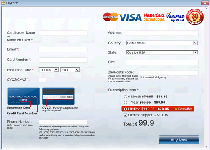
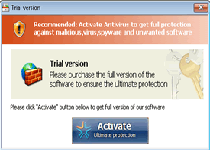
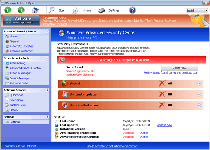
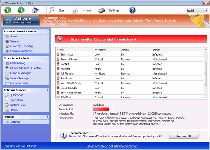
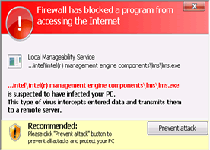
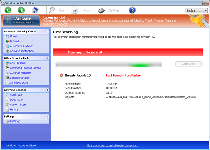
Technical Details
File System Modifications
Tutorials: If you wish to learn how to remove malware components manually, you can read the tutorials on how to find malware, kill unwanted processes, remove malicious DLLs and delete other harmful files. Always be sure to back up your PC before making any changes.
The following files were created in the system:%APPDATA%\guard-xoin.exe
File name: guard-xoin.exeSize: 1.08 MB (1084272 bytes)
MD5: a4b7982a80cba4da8bc7bf69bc70deff
Detection count: 5
File type: Executable File
Mime Type: unknown/exe
Path: %APPDATA%
Group: Malware file
Last Updated: January 8, 2020
%AppData%\result1.db
File name: %AppData%\result1.dbMime Type: unknown/db
Group: Malware file
%AppData%\guard-[RANDOM CHARACTERS].exe
File name: %AppData%\guard-[RANDOM CHARACTERS].exeFile type: Executable File
Mime Type: unknown/exe
Group: Malware file
Registry Modifications
HKEY..\..\{Value}HKEY_CURRENT_USER\Software\Microsoft\Windows NT\CurrentVersion\Winlogon "Shell"="C:\\Users\\User\\AppData\\Roaming\\guard-[RANDOM CHARACTERS].exe"HKEY_CURRENT_USER\Software\Microsoft\Windows\CurrentVersion\Run "GuardSoftware" = "%AppData%\guard-[RANDOM CHARACTERS].exe"HKEY_CURRENT_USER\Software\Microsoft\Windows\CurrentVersion\Policies\Associations "LowRiskFileTypes"=".zip;.rar;.nfo;.txt;.exe;.bat;.com;.cmd;.reg;.msi;.htm;.html;.gif;.bmp;.jpg;.avi;.mpg;.mpeg;.mov;.mp3;.m3u;.wav;"HKEY_CURRENT_USER\Software\Microsoft\Windows\CurrentVersion\Policies\Attachments "SaveZoneInformation"=1HKEY_LOCAL_MACHINE\SOFTWARE\Microsoft\Windows NT\CurrentVersion\Image File Execution Options\msmpeng.exe "Debugger"="svchost.exe"HKEY_LOCAL_MACHINE\SOFTWARE\Microsoft\Windows NT\CurrentVersion\Image File Execution Options\msseces.exe "Debugger"="svchost.exe"HKEY_LOCAL_MACHINE\SOFTWARE\Microsoft\Windows\CurrentVersion\policies\system "EnableLUA" = "0"HKEY_LOCAL_MACHINE\SOFTWARE\Microsoft\Windows\CurrentVersion\policies\system "ConsentPromptBehaviorUser" = "0"HKEY_LOCAL_MACHINE\SOFTWARE\Microsoft\Windows\CurrentVersion\policies\system "ConsentPromptBehaviorAdmin" = "0"HKEY..\..\..\..{Subkeys}HKEY_CURRENT_USER\Software\Microsoft\Windows\CurrentVersion\Settings
Additional Information
| # | Message |
|---|---|
| 1 | Error Attempt to run a potentially dangerous script detected. Full system scan is highly recommended. |
| 2 | Error System data security is at risk! To prevent potential PC errors, run a full system scan. |
| 3 | Firewall has blocked a program from accessing the Internet c:\windows\system32\iexplore.exe is suspected to have infected your PC. This type of virus intercepts entered data and transmits them to a remote server. |
| 4 | Warning! Identity theft attempt detected Hidden connection IP: xx.xxx.xxx.xxx Target: Microsoft Corporation keys Your IP: 127.0.0.1 |
Leave a Reply
Please note that we are not able to assist with billing and support issues regarding SpyHunter or other products. If you're having issues with SpyHunter, please get in touch with SpyHunter customer support through your SpyHunter . If you have SpyHunter billing questions, we recommend you check the Billing FAQ. For general suggestions or feedback, contact us.